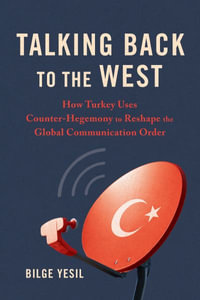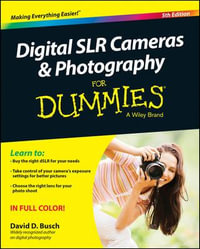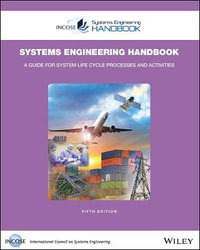Preface xi
Acknowledgments xvii
1 The Mystery of Wave Propagation and Radiation from an Antenna 1
Summary 1
1.1 Historical Overview of Maxwell’s Equations 3
1.2 Review of Maxwell–Hertz–Heaviside Equations 5
1.2.1 Faraday’s Law 5
1.2.2 Generalized Ampere’s Law 8
1.2.3 Gauss’s Law of Electrostatics 9
1.2.4 Gauss’s Law of Magnetostatics 10
1.2.5 Equation of Continuity 11
1.3 Development of Wave Equations 12
1.4 Methodologies for the Solution of the Wave Equations 16
1.5 General Solution of Maxwell’s Equations 19
1.6 Power (Correlation) Versus Reciprocity (Convolution) 24
1.7 Radiation and Reception Properties of a Point Source Antenna in Frequency and in Time Domain 28
1.7.1 Radiation of Fields from Point Sources 28
1.7.1.1 Far Field in Frequency Domain of a Point Radiator 29
1.7.1.2 Far Field in Time Domain of a Point Radiator 30
1.7.2 Reception Properties of a Point Receiver 31
1.8 Radiation and Reception Properties of Finite?Sized Dipole?Like Structures in Frequency and in Time 33
1.8.1 Radiation Fields from Wire?Like Structures in the Frequency Domain 33
1.8.2 Radiation Fields from Wire?Like Structures in the Time Domain 34
1.8.3 Induced Voltage on a Finite?Sized Receive Wire?Like Structure Due to a Transient Incident Field 34
1.8.4 Radiation Fields from Electrically Small Wire?Like Structures in the Time Domain 35
1.9 An Expose on Channel Capacity 44
1.9.1 Shannon Channel Capacity 47
1.9.2 Gabor Channel Capacity 51
1.9.3 Hartley?Nyquist?Tuller Channel Capacity 53
1.10 Conclusion 56
References 57
2 Characterization of Radiating Elements Using Electromagnetic Principles in the Frequency Domain 61
Summary 61
2.1 Field Produced by a Hertzian Dipole 62
2.2 Concept of Near and Far Fields 65
2.3 Field Radiated by a Small Circular Loop 68
2.4 Field Produced by a Finite?Sized Dipole 70
2.5 Radiation Field from a Finite?Sized Dipole Antenna 72
2.6 Maximum Power Transfer and Efficiency 74
2.6.1 Maximum Power Transfer 75
2.6.2 Analysis Using Simple Circuits 77
2.6.3 Computed Results Using Realistic Antennas 81
2.6.4 Use/Misuse of the S?Parameters 84
2.7 Radiation Efficiency of Electrically Small Versus Electrically Large Antenna 85
2.7.1 What is an Electrically Small Antenna (ESA)? 86
2.7.2 Performance of Electrically Small Antenna Versus Large Resonant Antennas 86
2.8 Challenges in Designing a Matched ESA 90
2.9 Near? and Far?Field Properties of Antennas Deployed Over Earth 94
2.10 Use of Spatial Antenna Diversity 100
2.11 Performance of Antennas Operating Over Ground 104
2.12 Fields Inside a Dielectric Room and a Conducting Box 107
2.13 The Mathematics and Physics of an Antenna Array 120
2.14 Does Use of Multiple Antennas Makes Sense? 123
2.14.1 Is MIMO Really Better than SISO? 132
2.15 Signal Enhancement Methodology Through Adaptivity on Transmit Instead of MIMO 138
2.16 Conclusion 148
Appendix 2A Where Does the Far Field of an Antenna Really Starts Under Different Environments? 149
Summary 149
2A.1 Introduction 150
2A.2 Derivation of the Formula 2D2/λ 153
2A.3 Dipole Antennas Operating in Free Space 157
2A.4 Dipole Antennas Radiating Over an Imperfect Ground 162
2A.5 Epilogue 164
References 167
3 Mechanism of Wireless Propagation: Physics, Mathematics, and Realization 171
Summary 171
3.1 Introduction 172
3.2 Description and Analysis of Measured Data on Propagation Available in the Literature 173
3.3 Electromagnetic Analysis of Propagation Path Loss Using a Macro Model 184
3.4 Accurate Numerical Evaluation of the Fields Near an Earth–Air Interface 190
3.5 Use of the Numerically Accurate Macro Model for Analysis of Okumura et al.’s Measurement Data 192
3.6 Visualization of the Propagation Mechanism 199
3.7 A Note on the Conventional Propagation Models 203
3.8 Refinement of the Macro Model to Take Transmitting Antenna’s Electronic and Mechanical Tilt into Account 207
3.9 Refinement of the Data Collection Mechanism and its Interpretation Through the Definition of the Proper Route 210
3.10 Lessons Learnt: Possible Elimination of Slow Fading and a Better Way to Deploy Base Station Antennas 217
3.10.1 Experimental Measurement Setup 224
3.11 Cellular Wireless Propagation Occurs Through the Zenneck Wave and not Surface Waves 227
3.12 Conclusion 233
Appendix 3A Sommerfeld Formulation for a Vertical Electric Dipole Radiating Over an Imperfect Ground Plane 234
Appendix 3B Asymptotic Evaluation of the Integrals by the Method of Steepest Descent 247
Appendix 3C Asymptotic Evaluation of the Integrals When there Exists a Pole Near the Saddle Point 252
Appendix 3D Evaluation of Fields Near the Interface 254
Appendix 3E Properties of a Zenneck Wave 258
Appendix 3F Properties of a Surface Wave 259
References 261
4 Methodologies for Ultrawideband Distortionless Transmission/ Reception of Power and Information 265
Summary 265
4.1 Introduction 266
4.2 Transient Responses from Differently Sized Dipoles 268
4.3 A Travelling Wave Antenna 276
4.4 UWB Input Pulse Exciting a Dipole of Different Lengths 279
4.5 Time Domain Responses of Some Special Antennas 281
4.5.1 Dipole Antennas 281
4.5.2 Biconical Antennas 292
4.5.3 TEM Horn Antenna 299
4.6 Two Ultrawideband Antennas of Century Bandwidth 305
4.6.1 A Century Bandwidth Bi?Blade Antenna 306
4.6.2 Cone?Blade Antenna 310
4.6.3 Impulse Radiating Antenna (IRA) 313
4.7 Experimental Verification of Distortionless Transmission of Ultrawideband Signals 315
4.8 Distortionless Transmission and Reception of Ultrawideband Signals Fitting the FCC Mask 327
4.8.1 Design of a T?pulse 329
4.8.2 Synthesis of a T?pulse Fitting the FCC Mask 331
4.8.3 Distortionless Transmission and Reception of a UWB Pulse Fitting the FCC Mask 332
4.9 Simultaneous Transmission of Information and Power in Wireless Antennas 338
4.9.1 Introduction 338
4.9.2 Formulation and Optimization of the Various Channel Capacities 342
4.9.2.1 Optimization for the Shannon Channel Capacity 342
4.9.2.2 Optimization for the Gabor Channel Capacity 344
4.9.2.3 Optimization for the Hartley?Nyquist?Tuller Channel Capacity 345
4.9.3 Channel Capacity Simulation of a Frequency Selective Channel Using a Pair of Transmitting and Receiving Antennas 347
4.9.4 Optimization of Each Channel Capacity Formulation 353
4.10 Effect of Broadband Matching in Simultaneous Information and Power Transfer 355
4.10.1 Problem Description 357
4.10.1.1 Total Channel Capacity 358
4.10.1.2 Power Delivery 361
4.10.1.3 Limitation on VSWR 361
4.10.2 Design of Matching Networks 362
4.10.2.1 Simplified Real Frequency Technique (SRFT) 362
4.10.2.2 Use of Non?Foster Matching Networks 366
4.10.3 Performance Gain When Using a Matching Network 367
4.10.3.1 Constraints of VSWR < 2 367
4.10.3.2 Constraints of VSWR < 3 369
4.10.3.3 Without VSWR Constraint 371
4.10.3.4 Discussions 372
4.10.4 PCB (Printed Circuit Board) Implementation of a Broadband? Matched Dipole 373
4.11 Conclusion 376
References 377
Index 383
























